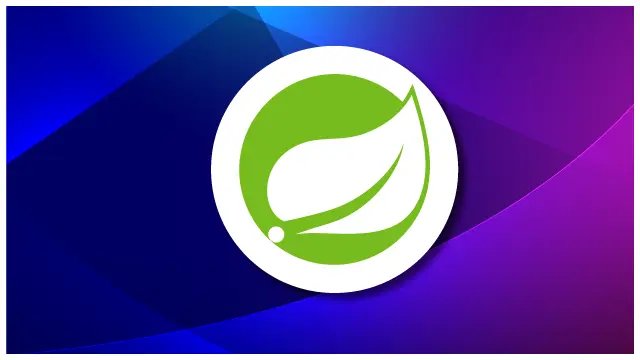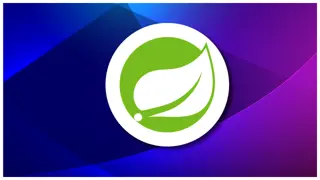
Spring Framework | Spring Boot For Beginners with MVC, Rest
Learn Spring Framework and Spring Boot For Beginners with MVC, Thymeleaf, Rest API & PostgreSQL with hands-on projects
Oak Academy
Summary
- Reed Courses Certificate of Completion - Free
Add to basket or enquire
Overview
Hi there,
Welcome to my " Spring Framework | Spring Boot For Beginners with MVC, Rest " course.
Learn Spring Framework and Spring Boot For Beginners with MVC, Thymeleaf, Rest API & PostgreSQL with hands-on projects
The Spring Framework is a comprehensive framework for Java development that provides infrastructure support, enterprise-level features, and promotes the use of best practices in software design and architecture.
A key element of Spring is infrastructural support at the application level: Spring focuses on the "plumbing" of enterprise applications so that teams can focus on application-level business logic, without unnecessary ties to specific deployment environments.
Spring Boot makes it easy to create stand-alone, production-grade Spring based Applications that you can "just run".
Spring makes programming Java quicker, easier, and safer for everybody. Spring’s focus on speed, simplicity, and productivity has made it the world's most popular Java framework.
It was created by Rod Johnson and was first released in 2003. The primary goal of the Spring Framework is to simplify the development of complex enterprise applications by providing a cohesive, modular, and extensible framework.
The components and features of Spring Framework are;
Inversion of Control (IoC) Container
Aspect-Oriented Programming (AOP)
Data Access
Transaction Management
Model-View-Controller (MVC)
Security
Dependency Injection
Enterprise Integration
and Testing
We will examine all of these topics in our course.
Web development in the context of Spring typically involves using various components and modules from the Spring ecosystem to build web applications.
Here are some key aspects of web development with Spring:
Spring Web Module
The Spring Web module provides features for building web applications, and it includes the Spring MVC framework. Spring MVC (Model-View-Controller) is a powerful and flexible framework for developing web applications. It allows you to build clean and maintainable code following the MVC design pattern
Spring Boot
Spring Boot is a project within the Spring ecosystem that simplifies the process of building production-ready applications. It includes a set of conventions and defaults that allow developers to quickly create stand-alone, production-grade Spring-based applications with minimal configuration
RESTful Web Services
Spring provides support for building RESTful web services through the Spring MVC framework. You can easily create RESTful controllers, handle HTTP methods, and produce/consume JSON or XML data
Course media
Description
Hi there,
Welcome to my " Spring Framework | Spring Boot For Beginners with MVC, Rest " course.
Learn Spring Framework and Spring Boot For Beginners with MVC, Thymeleaf, Rest API & PostgreSQL with hands-on projects
The Spring Framework is a comprehensive framework for Java development that provides infrastructure support, enterprise-level features, and promotes the use of best practices in software design and architecture.
A key element of Spring is infrastructural support at the application level: Spring focuses on the "plumbing" of enterprise applications so that teams can focus on application-level business logic, without unnecessary ties to specific deployment environments.
Spring Boot makes it easy to create stand-alone, production-grade Spring based Applications that you can "just run".
Spring makes programming Java quicker, easier, and safer for everybody. Spring’s focus on speed, simplicity, and productivity has made it the world's most popular Java framework.
It was created by Rod Johnson and was first released in 2003. The primary goal of the Spring Framework is to simplify the development of complex enterprise applications by providing a cohesive, modular, and extensible framework.
The components and features of Spring Framework are;
Inversion of Control (IoC) Container
Aspect-Oriented Programming (AOP)
Data Access
Transaction Management
Model-View-Controller (MVC)
Security
Dependency Injection
Enterprise Integration
and Testing
We will examine all of these topics in our course.
Web development in the context of Spring typically involves using various components and modules from the Spring ecosystem to build web applications.
Here are some key aspects of web development with Spring:
Spring Web Module
The Spring Web module provides features for building web applications, and it includes the Spring MVC framework. Spring MVC (Model-View-Controller) is a powerful and flexible framework for developing web applications. It allows you to build clean and maintainable code following the MVC design pattern
Spring Boot
Spring Boot is a project within the Spring ecosystem that simplifies the process of building production-ready applications. It includes a set of conventions and defaults that allow developers to quickly create stand-alone, production-grade Spring-based applications with minimal configuration
RESTful Web Services
Spring provides support for building RESTful web services through the Spring MVC framework. You can easily create RESTful controllers, handle HTTP methods, and produce/consume JSON or XML data
Spring Security
Security is a critical aspect of web development, and Spring Security provides comprehensive security services for Java EE-based enterprise software applications. It enables you to handle authentication, authorization, and protection against common security vulnerabilities.
Spring Data
When working with databases in a web application, Spring Data provides a simplified and consistent data access framework. It supports various data storage technologies, including relational databases, NoSQL databases, and more.
Thymeleaf
As mentioned earlier, Thymeleaf is a templating engine that integrates well with Spring for server-side rendering of web pages. It allows you to create dynamic and data-driven HTML templates.
Spring WebFlux
For reactive programming, Spring WebFlux provides an alternative to the traditional Spring MVC framework. It allows you to build reactive, non-blocking web applications.
WebSocket Support
Spring Framework includes support for WebSocket communication, allowing you to build real-time, bidirectional communication between the client and the server.
Internationalization and Localization
Spring provides features for internationalization and localization, allowing you to build applications that support multiple languages and regions.
WebSockets
Spring supports WebSocket communication, allowing for real-time, bidirectional communication between clients and servers.
When starting a web development project with Spring, you might use Spring Boot to quickly set up a project with sensible defaults. You can then leverage other Spring modules based on your specific requirements, such as Spring MVC for web applications, Spring Data for database interactions, Spring Security for handling security aspects, and more
In our course, you will learn;
Installing java jdk and most useful IDEs like eclipse and intellij
Spring Basics
Lombok
Postman,
Spring Rest API
Spring MVC
Thymeleaf
JPA,
Hibernate
IOC Container,
Dependency Injection,
Aspect Oriented Programming
Spring Core Container
spring boot
Spring Web
Spring Security
Spring Data Access/Integration
Spring Cloud
Spring Testing
Scheduling
And sending email with spring
What is the Spring Framework?
The Spring Framework (Spring) is an open source software development framework that provides infrastructure support for building primarily Java-based applications.
Why would you want to take this course?
Our answer is simple: The quality of teaching.
When you enroll, you will feel the OAK Academy`s seasoned developers' expertise.
Video and Audio Production Quality
All our videos are created/produced as high-quality video and audio to provide you the best learning experience.
You will be,
Seeing clearly
Hearing clearly
Moving through the course without distractions
You'll also get:
Lifetime Access to The Course
Fast & Friendly Support in the Q&A section
Dive in now!
We offer full support, answering any questions.
See you in the " Spring Framework | Spring Boot For Beginners with MVC, Rest " course.
Learn Spring Framework and Spring Boot For Beginners with MVC, Thymeleaf, Rest API & PostgreSQL with hands-on projects
Questions and answers
Currently there are no Q&As for this course. Be the first to ask a question.
Certificates
Reed Courses Certificate of Completion
Digital certificate - Included
Will be downloadable when all lectures have been completed.
Reviews
Currently there are no reviews for this course. Be the first to leave a review.
Legal information
This course is advertised on reed.co.uk by the Course Provider, whose terms and conditions apply. Purchases are made directly from the Course Provider, and as such, content and materials are supplied by the Course Provider directly. Reed is acting as agent and not reseller in relation to this course. Reed's only responsibility is to facilitate your payment for the course. It is your responsibility to review and agree to the Course Provider's terms and conditions and satisfy yourself as to the suitability of the course you intend to purchase. Reed will not have any responsibility for the content of the course and/or associated materials.


